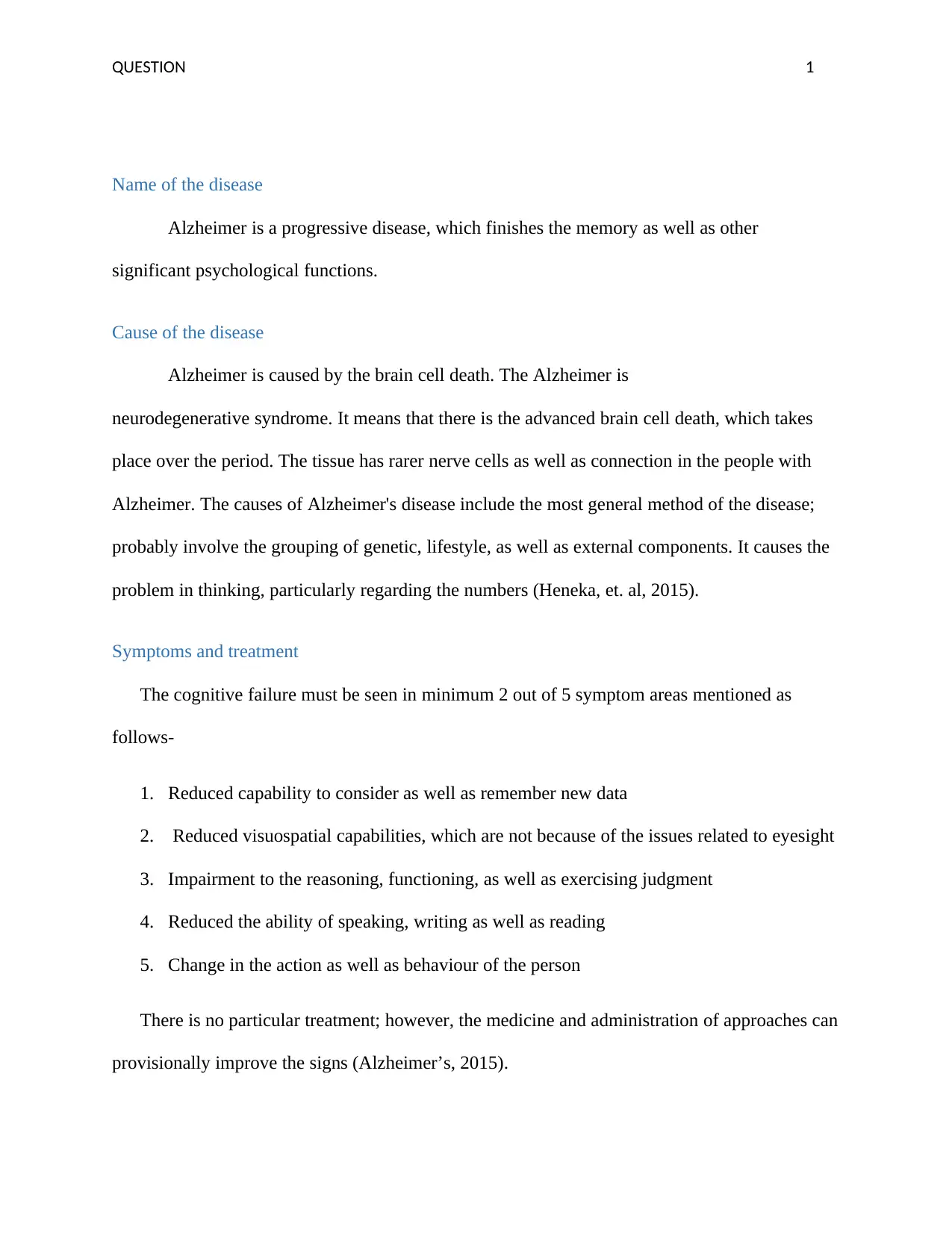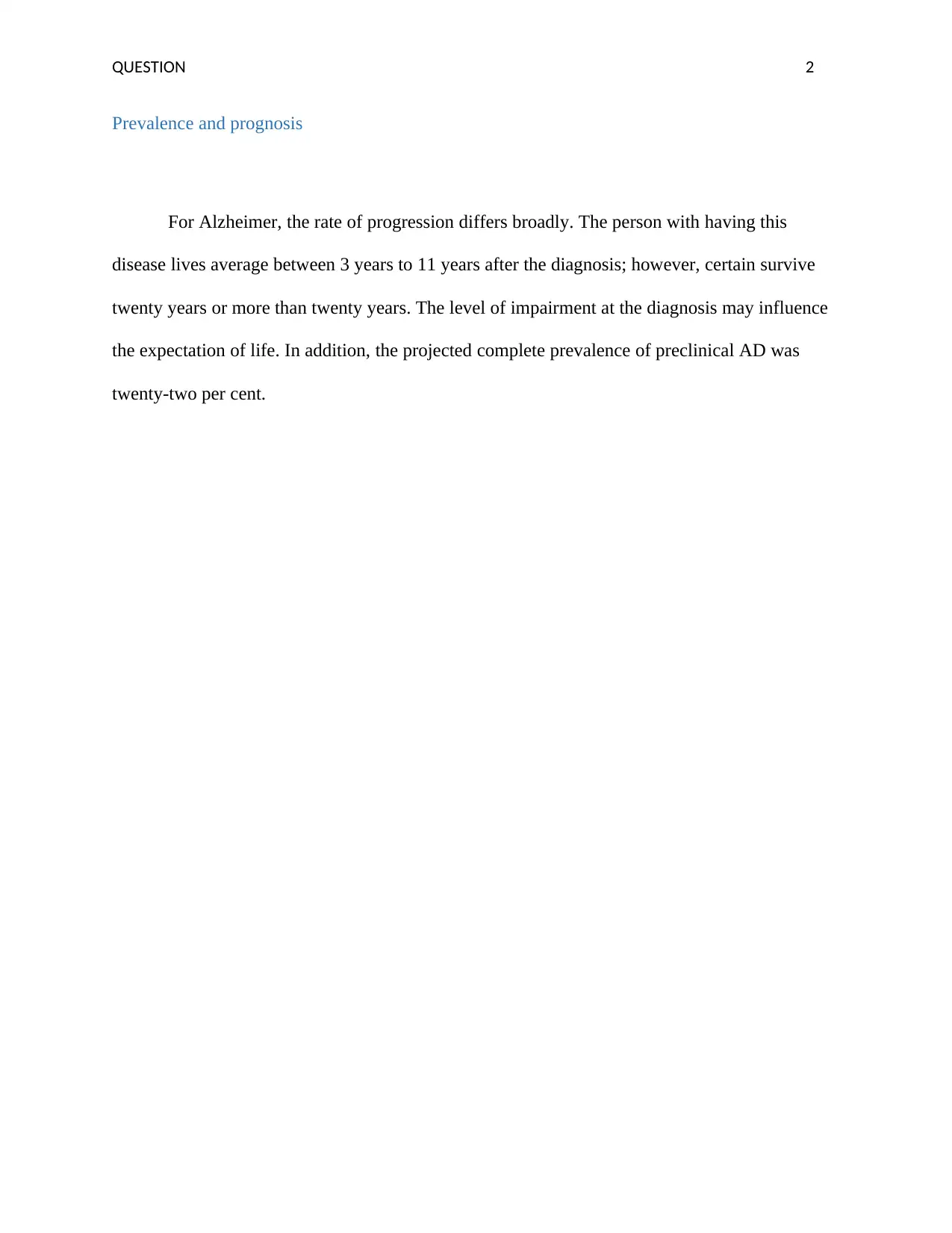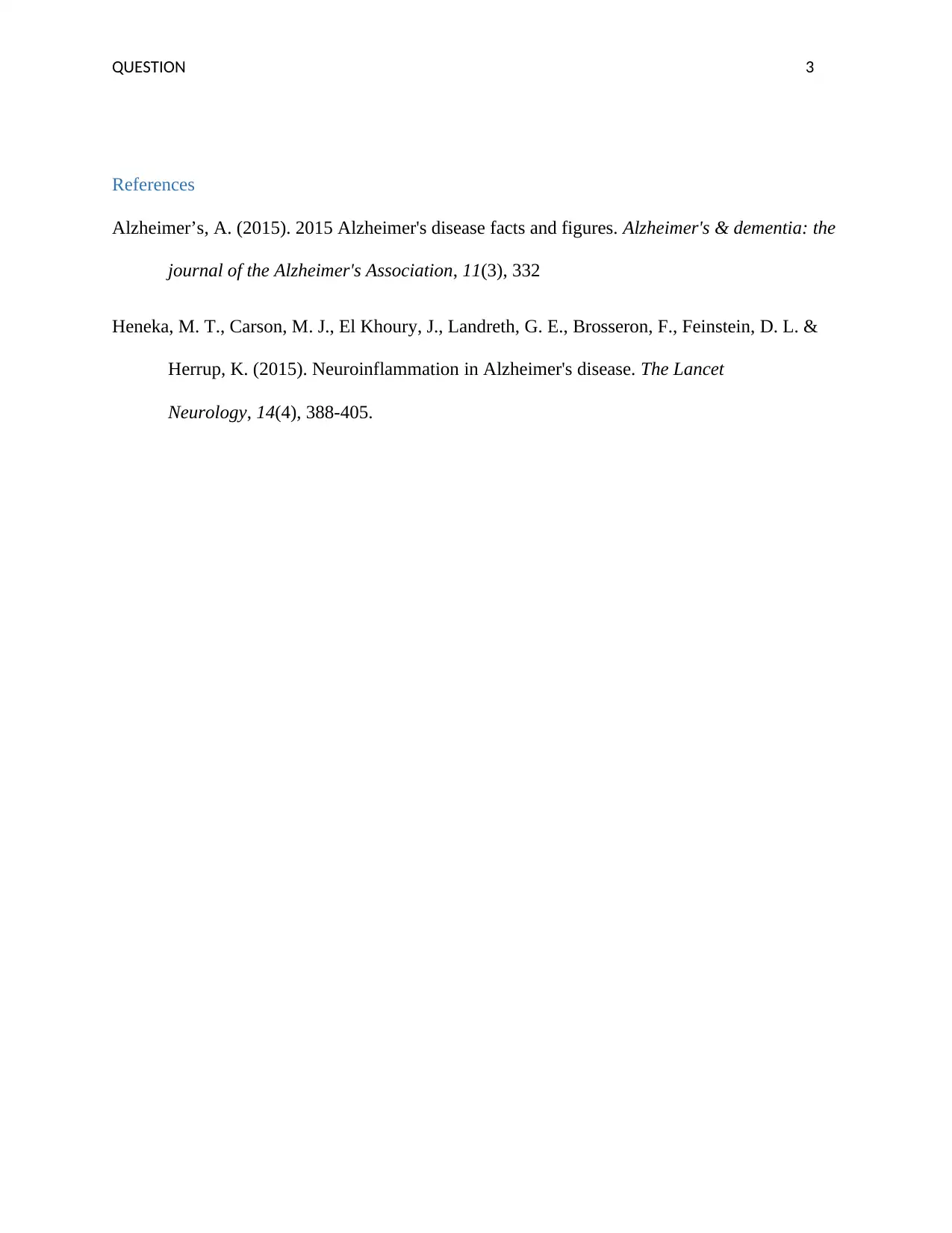Alzheimer's Disease: Causes, Symptoms, Treatment, and Prognosis
VerifiedAdded on 2022/10/09
|4
|421
|33
Report
AI Summary
This report provides a comprehensive overview of Alzheimer's disease, a progressive neurodegenerative condition characterized by memory loss and cognitive decline. It explores the causes of the disease, including the role of brain cell death and genetic and environmental factors. The report details the symptoms of Alzheimer's, such as impaired cognitive function, visuospatial difficulties, and changes in behavior. Furthermore, it discusses the current treatment approaches, including medications and management strategies, while acknowledging the absence of a cure. The report also addresses the prevalence and prognosis of Alzheimer's, noting the varying disease progression rates and the impact of the initial diagnosis on life expectancy. The report includes references to relevant research, enhancing the credibility and depth of the information provided.
1 out of 4











![[object Object]](/_next/static/media/star-bottom.7253800d.svg)